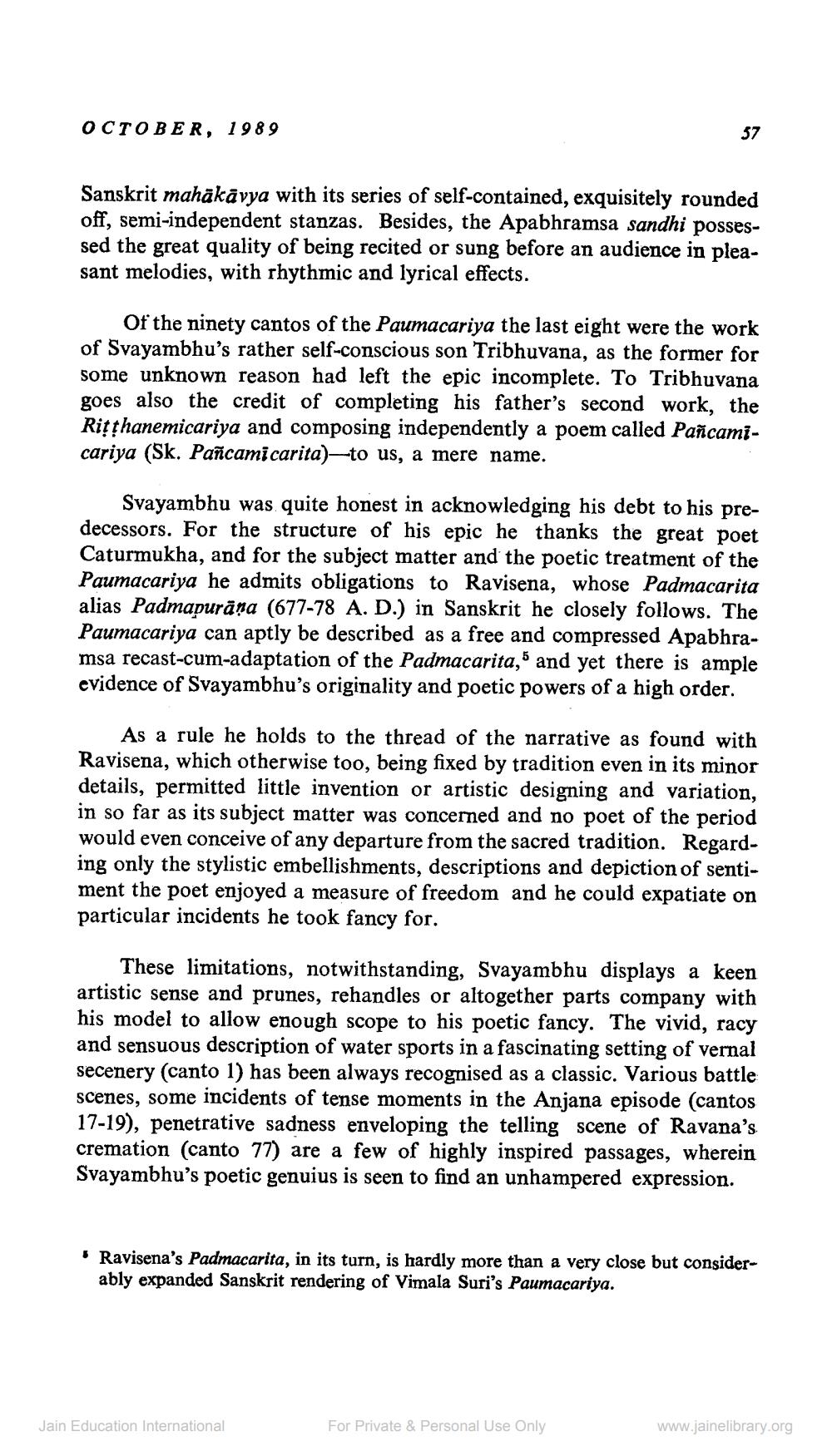________________
OCTOBER, 1989
Sanskrit mahākāvya with its series of self-contained, exquisitely rounded off, semi-independent stanzas. Besides, the Apabhramsa sandhi possessed the great quality of being recited or sung before an audience in pleasant melodies, with rhythmic and lyrical effects.
Of the ninety cantos of the Paumacariya the last eight were the work of Svayambhu's rather self-conscious son Tribhuvana, as the former for some unknown reason had left the epic incomplete. To Tribhuvana goes also the credit of completing his father's second work, the Ritthanemicariya and composing independently a poem called Pañcamicariya (Sk. Pañcamicarita)—to us, a mere name.
Svayambhu was quite honest in acknowledging his debt to his predecessors. For the structure of his epic he thanks the great poet Caturmukha, and for the subject matter and the poetic treatment of the Paumacariya he admits obligations to Ravisena, whose Padmacarita alias Padmapurana (677-78 A. D.) in Sanskrit he closely follows. The Paumacariya can aptly be described as a free and compressed Apabhramsa recast-cum-adaptation of the Padmacarita, and yet there is ample evidence of Svayambhu's originality and poetic powers of a high order.
As a rule he holds to the thread of the narrative as found with Ravisena, which otherwise too, being fixed by tradition even in its minor details, permitted little invention or artistic designing and variation, in so far as its subject matter was concerned and no poet of the period would even conceive of any departure from the sacred tradition. Regarding only the stylistic embellishments, descriptions and depiction of sentiment the poet enjoyed a measure of freedom and he could expatiate on particular incidents he took fancy for.
These limitations, notwithstanding, Svayambhu displays a keen artistic sense and prunes, rehandles or altogether parts company with his model to allow enough scope to his poetic fancy. The vivid, racy and sensuous description of water sports in a fascinating setting of vernal secenery (canto 1) has been always recognised as a classic. Various battle scenes, some incidents of tense moments in the Anjana episode (cantos 17-19), penetrative sadness enveloping the telling scene of Ravana's cremation (canto 77) are a few of highly inspired passages, wherein Svayambhu's poetic genuius is seen to find an unhampered expression.
· Ravisena's Padmacarita, in its turn, is hardly more than a very close but consider
ably expanded Sanskrit rendering of Vimala Suri's Paumacariya.
Jain Education International
For Private & Personal Use Only
www.jainelibrary.org




